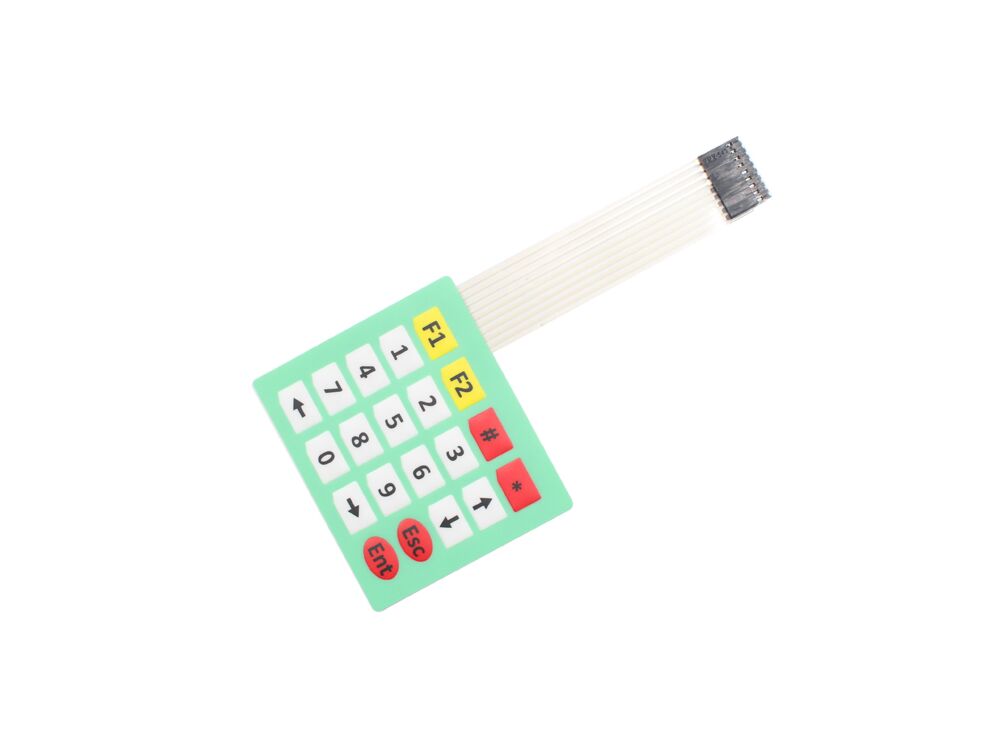Comprehending Membrane Changes: The Trick to Trusted and resilient Controls

What Are Membrane Switches?
Membrane switches are an advanced remedy in the world of user interface innovation, integrating performance and layout flawlessly. These devices serve as an interface between users and electronic systems, integrating a number of elements into a small style. Normally created from adaptable, slim layers of products, membrane layer buttons are created to react to touch, making it possible for customers to interact with equipment and digital tools successfully.
The key aspects of a membrane layer switch include a printed circuit layer, graphic overlay, and a spacer layer that prevents unexpected activation. The visuals overlay can be tailored to mirror brand name identification or user preferences, enhancing visual appeals while ensuring usability. Membrane switches are generally used in various applications, including medical gadgets, customer electronic devices, and commercial equipment, owing to their resilience and resistance to ecological factors such as moisture and dust.
Among the crucial benefits of membrane buttons is their ability to hold up against damage, making them suitable for high-traffic environments. Additionally, they are light-weight and call for very little area, allowing for cutting-edge designs in item development. In general, membrane switches stand for a efficient and functional choice for contemporary electronic interfaces, weding modern technology with user-centric layout concepts.
Exactly How Membrane Layer Switches Over Work
The operation of membrane layer changes hinges on an easy yet effective mechanism that equates user input right into electronic signals. When an individual presses the switch, the top layer flaws, enabling a conductive aspect in the circuit layer to make contact with an equivalent conductive pad on the underside of the graphic overlay.
The design of membrane buttons can vary, but they usually integrate domes or responsive aspects to offer comments to the individual, boosting the total experience - membrane switch. The materials made use of in membrane layer switches, such as polyester or polycarbonate, add to their durability and resistance to environmental aspects, including wetness and dirt. The published circuits are typically encapsulated, which secures them from wear and tear over time.
Advantages of Membrane Buttons

Additionally, membrane buttons are known for their longevity. Created from robust materials, they are immune to dust, wetness, and physical wear, which substantially prolongs their life-span contrasted to typical mechanical buttons. This sturdiness makes them specifically ideal for high-traffic environments and applications needing long life.
Another significant benefit is the simplicity of cleaning and upkeep. The smooth surface of membrane layer switches decreases dirt buildup and is often invulnerable to spills, making them suitable for settings that call for frequent sanitization.
Additionally, membrane layer switches offer a streamlined profile, resulting in a thinner layout that can be incorporated right into various tools without adding bulk. This attribute not only enhances the visual appeal yet likewise adds to an extra ergonomic product style.
Applications of Membrane Buttons
Straightforward and versatile, membrane switches discover applications across a vast array of industries, consisting of clinical devices, customer electronic devices, and commercial devices. In the medical field, these buttons are essential to devices such as analysis tools, individual surveillance systems, and mixture pumps, where integrity and ease of cleaning are essential. Their capacity to stand up to severe atmospheres and keep performance makes them perfect for such applications.

In consumer electronics, membrane layer switches are utilized in items like microwaves, washing devices, and remotes - membrane switch. Their sleek style permits intuitive interface, boosting the overall individual experience while supplying resilience and resistance to use and tear
Industrial devices likewise gains from membrane layer switches, particularly in control panels for machinery and automation systems. These buttons supply protection against dust straight from the source and wetness, making certain consistent performance in challenging atmospheres. In addition, their personalized features allow makers to customize them to certain functional demands, boosting performance and capability.
Choosing the Right Membrane Switch
When selecting a membrane layer button, it is important to take into consideration numerous aspects that affect performance and suitability for specific applications. The key factors to consider consist of ecological conditions, tactile feedback, durability, and layout requirements.
First, evaluate the operating setting; switches revealed to wetness, chemicals, or extreme temperatures call for details products to guarantee longevity and capability. Next off, assess the need for responsive comments. Depending on customer communication, have a peek at these guys some applications may profit from a tactile response to validate activation, while others may prefer a non-tactile layout for aesthetic reasons.
Durability is an additional important element; membrane layer switches need to be created to endure frequent usage, impacts, and abrasion. Make sure the selected button can endure the anticipated lifecycle, particularly in high-usage circumstances.

Final Thought
Finally, membrane layer changes work as important parts in the style of trusted and long lasting control systems across numerous markets. Their compact style, combined with durable building and personalized functions, enhances individual interaction while making sure longevity sought after environments. The convenience of membrane switches over enables customized solutions that satisfy specific functional demands, strengthening their value in modern innovation. As industries continue to advance, the significance of incorporating effective membrane button solutions can not be overstated.
Membrane changes stand for an essential facet of modern user interface layout, mixing capability with resilience in numerous applications.Membrane layer buttons are an innovative service in the world of customer interface technology, combining functionality and style flawlessly. Generally created from continue reading this flexible, slim layers of materials, membrane layer buttons are created to respond to touch, making it possible for customers to interact with machinery and digital gadgets properly.
The design of membrane switches can differ, however they usually include domes or tactile components to supply feedback to the individual, improving the general experience.In verdict, membrane layer switches over serve as necessary elements in the layout of durable and trusted control systems throughout different markets.